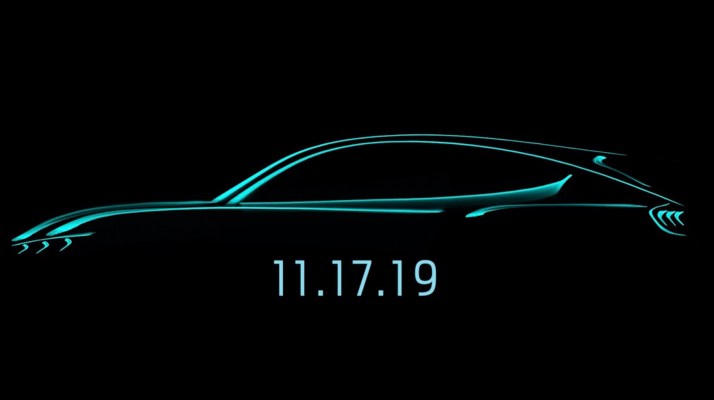Spook the heck out of the kids this Halloween with these Echo tricks (and treats).
It’s that time of year again — the holiday where kids dress up as monsters and Alexa comes out to scare. Yes, that’s right, Amazon’s voice assistant can help turn your smart home into the best Halloween house in the neighborhood.
Not only can you conjure up Halloween music and creepy sounds with Alexa, but you can also set up a haunted house-themed light setting. Here are all the ways Amazon Echo ($70 at Amazon) can make your home spooky on All Hallows’ Eve.
Play spooky sounds
It’s not Halloween without spooky sounds, and there are many Alexa skills that are designed for that purpose.
- Spooky Halloween Sounds will play a continuous loop of spooky sounds until you tell Alexa to stop. Just say “Alexa, start Spooky Halloween Sounds” to get started.
- Spooky Sounds plays 50 minutes of original spooky sounds (in a continuous loop), complete with an audio easter egg hidden within. Say “Alexa, open Spooky Sounds” to begin.
- Spooky Scream will play a random scream after a set time of your choosing. Say “Alexa, ask Spooky Scream to start in five minutes.” Turn up the volume and wait for your unknowing victim to fall right into your trap.
You can also request audio like the Spooky Sounds for Halloween EP on Spotify.
Play Halloween-themed games
If you’re looking for an eerie game to play, there are quite a few Alexa skills to choose from.
- The Magic Door is a popular interactive adventure game. If you take the Dark Forest Path, it will lead you to the Witch’s mansion in search of the Wise Wizard.
- Ghost Detector is exactly what it sounds like. You must detect and capture ghosts to earn Ghost Bux, which will let you purchase “improvements, gadgets and missions” to further gameplay.
- Haunted Adventure is just one of several spooky adventure games.
- Halloween Feel The Pressure is a spin-off of Feel The Pressure with a Halloween twist. You must answer questions based on a letter of the alphabet. You need 10 correct answers in a row to “save your soul.”
Tell scary stories
Want to hear something chilling, yet kid-friendly? Simply say “Alexa, tell me a spooky story” and you’ll hear a short story voiced by an actor. They’re pretty cheesy, so they are best for younger ears.
If you want to hear something a bit scarier, you can try the Scare Me skill. Just say “Alexa, ask Scare Me to tell me a scary story.” It’ll read you a short, two-sentence scary story.
Play Halloween music
Of course, one of Alexa’s best tricks this Halloween is thematic party music. You can easily make (or follow) a playlist with all your Halloween favorites on Amazon Music or Spotify — like this Halloween Party Soundtrack — and ask Alexa to play it. Or you can use the Halloween Music skill.
Check who’s at the door
Did the doorbell just ring, or was that the TV? Check if there are trick-or-treaters waiting with Alexa.
For this, you’ll need a video doorbell — like one from Ring, August Home or Nest — and a device where you can watch a video feed, such as the Echo Show or Echo Dot. If you have an Amazon Fire TV, you can use it to show live video feeds on your TV.
When you hear the doorbell, or think you hear it, ask Alexa to “Answer the front door” or “Show [camera name]” to see who’s there.
Create your own spooky scene
If you have smart bulbs and other smart devices around the house, you can use a SmartThings hub or a service like Yonomi to create scenes that turn your house from normal to Halloween-ready in seconds.
For instance, you could create a scene called Haunted House that:
- Turns the lights orange
- Toggles on a smart switch with a decoration plugged into it
- Plays a specific Halloween playlist over Sonos speakers
Then you just need to say, “Alexa, turn on the Haunted House.” Here are a few more recommendations from Yonomi.
Get costume ideas
If you still haven’t come up with a solid costume idea, Alexa can help. The Halloween Costume Ideas skill will serve up ideas until you find the right one.
Just say, “Alexa, open Halloween Costume Ideas.” Then answer the “yes” or “no” questions until you come across the perfect costume idea.
Tell Halloween jokes
Alexa has a few thematic jokes up its sleeve. Just say, “Alexa, tell me a Halloween joke.” One of the ones it gave me was, “What’s black and white and dead all over? A zombie in a tuxedo.”
These jokes won’t knock you off your feet, but your kids will probably like them.
When Halloween’s over, dive into the 10 weirdest things your Amazon Echo can do and read how Amazon Echo’s auto features will make your day smooth as buttah.
via: cnet
